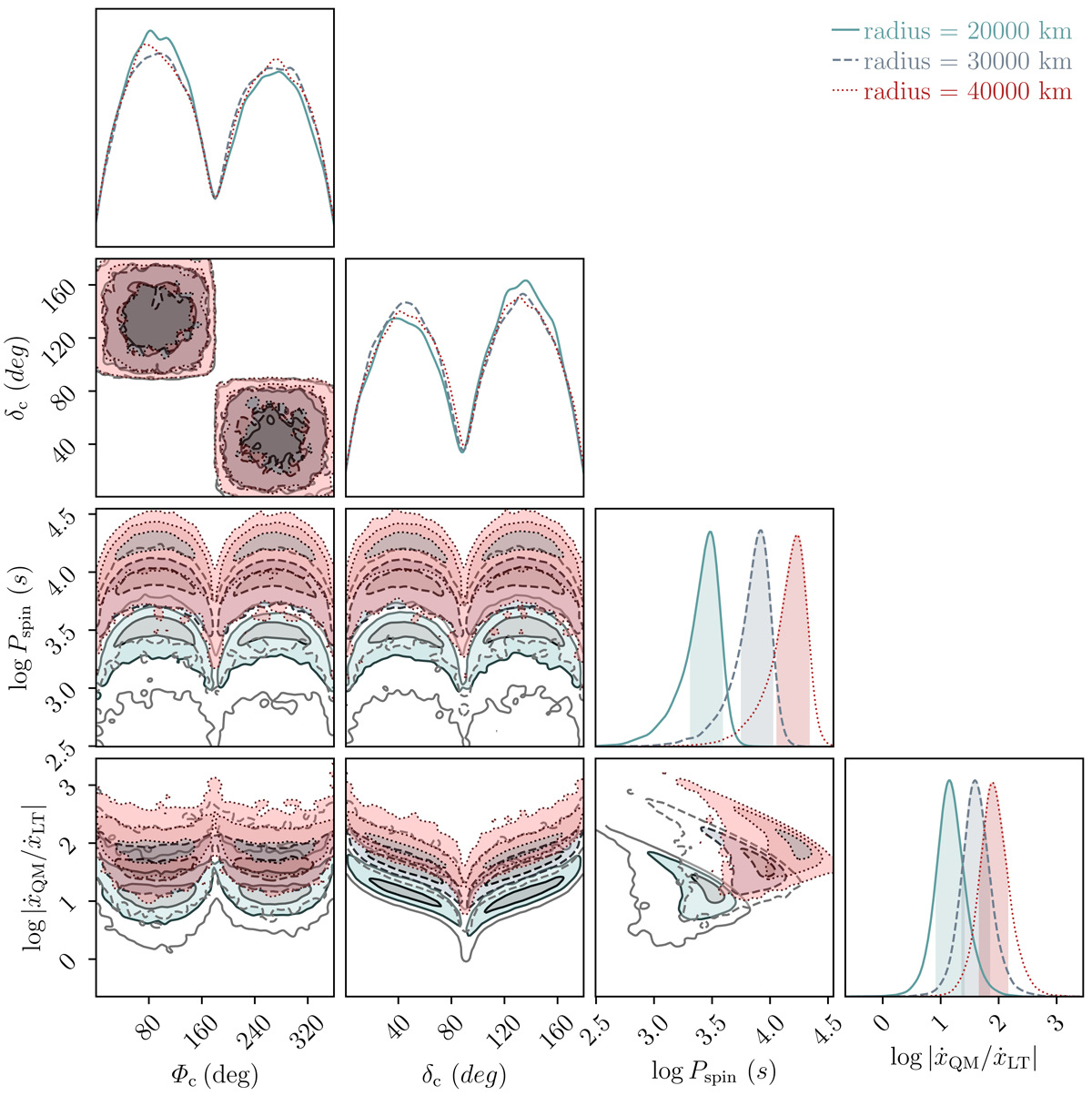Fig. A.2.

Download original image
Corner plot showing the constraints on the rotation period of the WD assuming that the measured ẋ is due to spin-orbit interactions from the WD. ϕC is the precession phase of the WD spin, and δC denotes its misalignment with respect to the orbital angular momentum. The solid blue, dashed olive, and dot-dashed red lines indicate Markov chain Monte Carlo runs assuming a WD radius of 20000, 30000, and 40000 km, respectively. We correspondingly infer a mean rotation rate of 3090, 8472, and 17218 seconds for the WD rotation. The bottom rightmost panel indicates the ratio between the contributions to ẋ from classical quadrupole moment (QM) and the relativistic Lense-Thirring precession (LT) of the orbit. For the radius of 20,000 km, we find the LT contribution to be a few percent at most, and for higher radii it is completely negligible. Note that for clarity we have assumed the sense of the inclination here to be < 90 deg. For inclination > 90 deg, which is also equally likely, the constraints on the period and the component contributions remain the same, but the constraints on (δC, ΦC) change as δC = δC − 90° and ΦC = ΦC + 180°.
Current usage metrics show cumulative count of Article Views (full-text article views including HTML views, PDF and ePub downloads, according to the available data) and Abstracts Views on Vision4Press platform.
Data correspond to usage on the plateform after 2015. The current usage metrics is available 48-96 hours after online publication and is updated daily on week days.
Initial download of the metrics may take a while.


